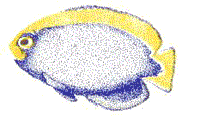-
Browse the Categories to the right, or enter
a topic here

Jellyfish
and Jellyfish Tanks
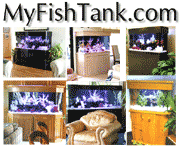
Acrylic Aquariums, Stands, Canopies and
Filters
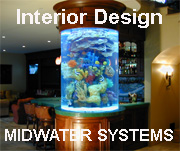
Interior Design Projects

Aquarium Reality Video's
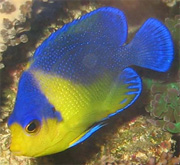
Dwarf and Pygmy Angelfish
Follow us on....





The best and most affordable
Web Host I've ever worked with,...

...and they host this web site.
|
|
|
|
|
The Sponges: A General Overview
By. Jim Wolf C.S.U.N. Marine Biologist
ODYSSEA ( MASLA ) Volume 1, Issue 4
Sponges are among the simplest of the macroscopic animals found in a
marine aquarium. There are over 9000 species worldwide and most are found
in marine environments. They come in a variety of shapes and sizes from
insignificant "slime like blobs" to huge spheres over 10 feet across!!
Sponges occasionally develop symbiotic (mutually beneficial) relationships
with both algae and bacteria and may contain many complex chemicals that
have pharmaceutical value.
The anatomy of a typical sponge is very simple. They are basically a
mass of cells. They posses no nervous, digestive or excretory systems.
In fact they are so simple that you could place a sponge into a blender,
and under the right conditions the cells will regroup into a new individual
in just a few days! Sponges can usually be identified by their lack of
any significant features and their sponge like texture. Here a few hints
to help you in keeping sponges alive.
When you get your sponge home you will want to acclimate it to your
aquariums very slowly. Sponges are not too sensitive to temperature, but
do not like drastic shifts in salinity. Add a little bit of sea water (about
1/4 the original volume in the bag) of sea water to the bag containing
the sponge every 10 minutes for about one hour. This will enable the sponge
to slowly adjust the changing water conditions. Place your sponge in an
area of the tank that has good water flow and minimum lighting. The flow
will bring food to the sponge, and the diminished light will help to keep
algae from over growing the sponge.
Feeding your sponge is a fairly simple process. A liquid invertebrate
food is acceptable. The main point is that you do not get too large a sponge.
A chunk of sponge the size of a golfball can filter over 2 liters of sea
water an hour!. Do not put many sponges into one aquarium, and keep your
sponges small. It also a good idea to stop most mechanical filtration during
feeding to give your sponge a chance to get some food (make sure that you
restart the mechanical filters after a few hours) . If you keep sponges
well fed, they may even reproduce! The commonly reproduce by simply splitting
off a chunk, and starting a new individual. While they can reproduce by
eggs and sperm this method is not too common in aquariums.
As a rule sponges are easy to grow if given the right conditions. Some
sponges can bore into rocks! Others spend their entire life rolling along
the sea floor. Still others have skeltons made entirely of glass, and a
few species make it into fresh water lakes. For their ease of maintenance
and the outstanding colors, sponges make a worthy addition to your salt
water aquarium!
|
Visit the Aquarium Design home page
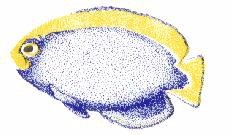
|
|






